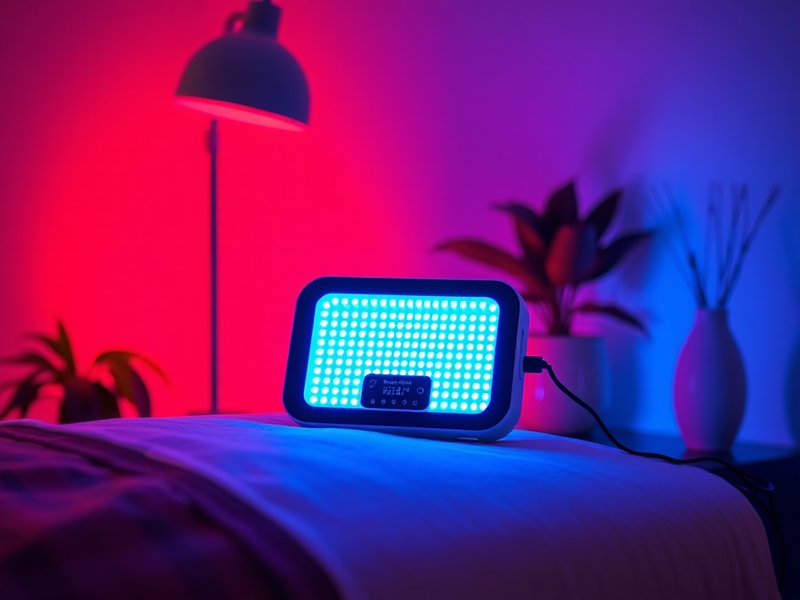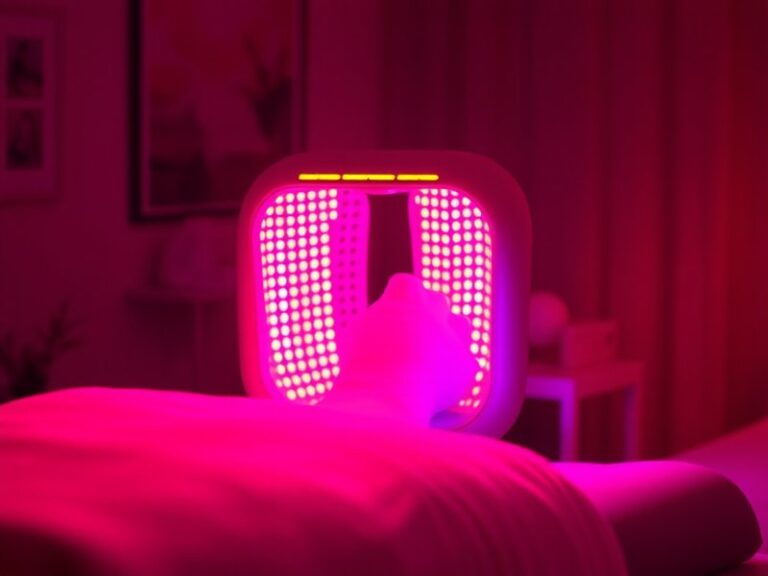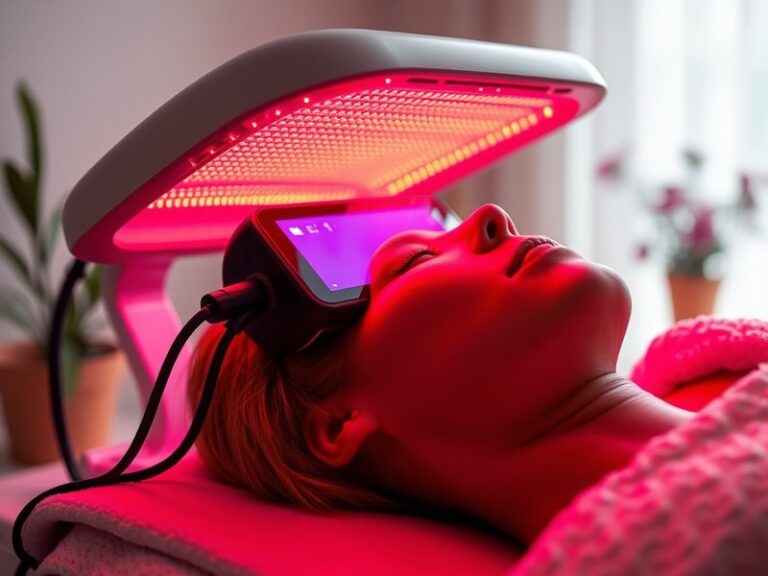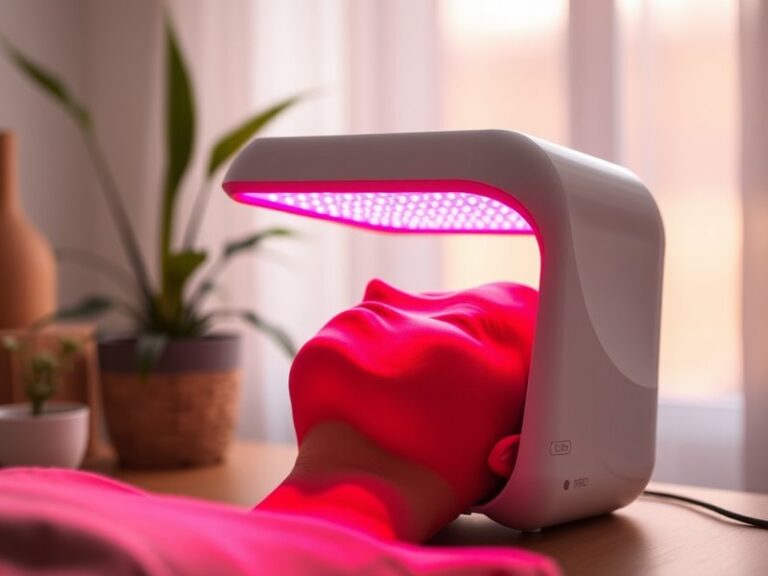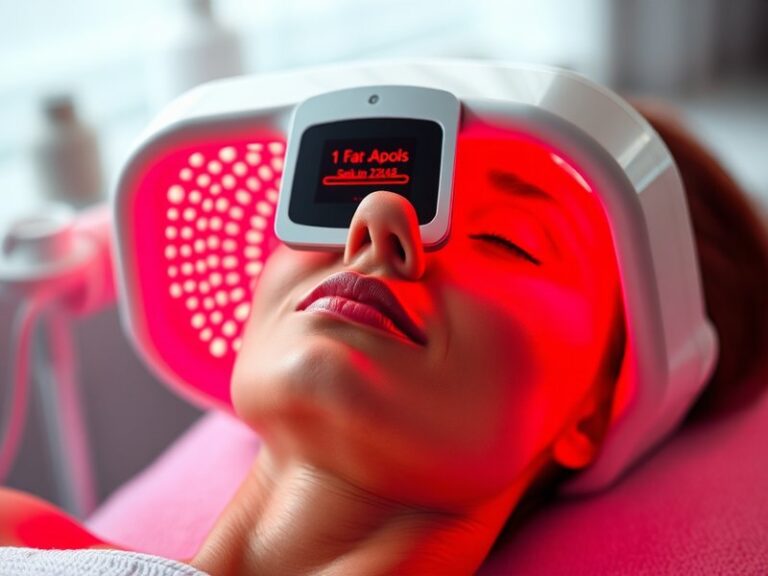Can You Use Blue And Red Light Therapy Together?
Can You Use Blue And Red Light Therapy Together?
Can harnessing the power of both blue and red light therapy enhance your skin care routine?
This article will explore the compatibility of blue and red light therapy, their individual benefits, and how they can be used together effectively. If you’re curious about maximizing skin health through innovative treatments, read on to uncover the synergy of these two therapies.
Key Takeaways
- Combining blue and red light therapy can target various skin concerns simultaneously.
- Blue light therapy is effective for acne treatment, while red light therapy aids in skin rejuvenation and healing.
- Proper protocols are essential to maximize the benefits and minimize any potential risks associated with using both therapies.
What is Blue and Red Light Therapy?
Blue and red light therapy are non-invasive skin treatments using specific wavelengths of light to target various skin issues. Blue light, typically in the range of 415 nm, penetrates the skin to combat acne-causing bacteria, making it effective for those with acne-prone skin. Red light, with wavelengths around 600-650 nm, penetrates deeper layers of the skin, enhancing collagen production, reducing inflammation, and promoting healing.
Both therapies have gained traction in dermatology and aesthetics, often recommended for home use through devices like light masks and handheld devices. Understanding their unique properties helps in realizing their combined potential for comprehensive skin care.
What are the Benefits of Blue and Red Light Therapy?
Using blue and red light therapies together can yield significant advantages for various skin types and issues. Here’s a closer look at the benefits:
Enhanced Acne Treatment
Combining blue and red light therapy helps in not only killing acne-causing bacteria but also soothing inflammation and promoting healing of existing blemishes. This dual-action makes it particularly effective for active acne.
Improved Skin Tone and Texture
Red light therapy stimulates collagen and elastin production, which can enhance the overall texture and firmness of the skin. This, when paired with the blemish-fighting properties of blue light, can result in clearer and smoother skin.
Accelerated Healing Processes
For individuals with scarring from acne or other skin conditions, using both therapies can significantly speed up the healing process, as the red light helps repair tissue while blue light works to prevent new breakouts.
Reduced Signs of Aging
Regularly combining both therapies can reduce fine lines and wrinkles. The collagen boost from red light coupled with blue light’s anti-inflammatory properties can create a more youthful appearance.
Is it Possible to Use Blue and Red Light Therapy Together?
Yes, it is possible to use blue and red light therapy together, and many users find this combination beneficial for their skin care regimen. Many devices are designed to deliver both types of light in a session, allowing for comprehensive treatment in one sitting.
What are the Advantages of Using Them Together?
Utilizing blue and red light therapy in conjunction offers several advantages:
Comprehensive Skin Care Solution
The combination provides a holistic approach to skin health, addressing multiple concerns like acne, aging, and texture in one regimen.
Discover our insights Can You Use Red Light After Dermarolling?
Time Efficiency
Using both therapies at once means shorter treatment sessions, giving users the benefit of advanced skin care without extra time commitment.
Synergistic Effects
The interaction between the two therapies can enhance the effectiveness of each. For instance, blue light’s ability to prevent acne can further assist the healing nature of red light, creating a balanced approach to skin health.
Improved Customer Satisfaction
Many users report higher satisfaction rates when using both types of therapies together due to visibly improved skin conditions.
What are the Disadvantages of Using Them Together?
While there are clear benefits, it’s essential to consider potential disadvantages:
Increased Sensitivity
Some individuals may experience increased skin sensitivity, especially those with sensitive skin types. Monitoring skin response is crucial when beginning combined therapy.
Limited Research Availability
Although many users have positive outcomes, comprehensive clinical studies combining blue and red therapy are somewhat limited, making individual responses variable.
Potential Device Limitations
Certain devices may not effectively deliver both wavelengths, making it crucial to select a device specifically designed for combined use to ensure optimal results.
What are the Things to Consider Before Combining Therapies?
Before incorporating both therapies into your routine, consider the following:
Skin Type and Concerns
Assess your skin type and specific concerns. Those with sensitive or reactive skin should consult a dermatologist before combining therapies to avoid adverse effects.
Device Quality and Compatibility
Ensure that the device you choose is designed for dual therapy use. Low-quality devices may not deliver the necessary wavelengths effectively.
Consulting with Professionals
Before beginning a combined therapy regimen, consulting a skincare professional is advisable. They can help tailor treatments specifically to your skin’s needs and monitor your progress.
What are the Alternatives to Using Blue and Red Light Therapy Together?
If combined therapies don’t seem suitable, various alternatives may also address similar skin concerns:
Topical Treatments
Many topical treatments, such as benzoyl peroxide for acne and retinoids for skin rejuvenation, can serve as effective alternatives to light therapy.
Chemical Peels
Chemical peels can improve skin texture and fight acne. They remove the outer layer of skin, promoting regeneration and improving overall appearance without needing light therapy.
See the full explanation Shower after red light therapy?
Microdermabrasion
This physical exfoliation treatment can enhance skin appearance by removing dead skin cells, reducing acne scars, and improving texture.
Conclusion: Is it Recommended to Use Blue and Red Light Therapy Together?
Combining blue and red light therapy can be a powerful way to address a wide range of skin concerns if done carefully. By understanding the potential benefits and taking precautions, users can harness the full potential of both therapies for healthier, clearer skin.
Frequently Asked Questions
Can blue and red light therapy be used every day?
Yes, many users can benefit from daily use, but it’s best to start slowly and increase frequency based on skin tolerance.
Are there any side effects?
Most users experience minimal side effects, but skin sensitivity can occur. It’s important to monitor your skin’s reaction and adjust usage accordingly.
How long does it take to see results?
Results can vary by individual, but users often notice improvements within a few weeks of consistent usage.
Is one therapy better than the other?
It largely depends on your skin type and concerns. Blue light therapy is excellent for acne, while red light offers stronger rejuvenating benefits. Using both addresses a broader range of issues.
What should I do if my skin reacts negatively?
If you experience adverse reactions, stop using the therapy and consult a dermatologist for guidance on next steps.
